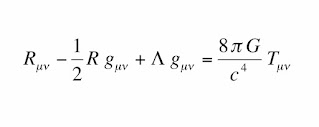When I read Fundamentals by Frank Wilczek I learnt something that I found beautiful and amazing about general relativity and quantum field theory.
Any massless spin-2 field must couple to the stress–energy tensor in the same way that gravitational interactions do. This is an alternative means to derive Einstein's equation.
Furthermore, if a massless spin-2 particle is discovered, it must be the graviton. There is a nice discussion of this on physics.forums
According to Wikipedia, "For a comparison of the geometric derivation and the (non-geometric) spin-2 field derivation of general relativity, refer to box 18.1 (and also 17.2.5) of Misner, C. W.; Thorne, K. S.; Wheeler, J. A. (1973). Gravitation."
In the 1960s, Steven Weinberg published a series of seminal papers, summarised below by one commenter in the physics.forums discussion. The results are also derived in chapter 5 of Weinberg's Quantum Field Theory text (volume 1).
S. Weinberg, “Photons and gravitons in S-matrix theory: derivation of charge conservation and equality of gravitational and inertial mass,” Phys. Rev. 135, B1049 (1964).
S. Weinberg, “Photons and gravitons in perturbation theory: Derivation of Maxwell’s and Einstein’s equations,” Phys. Rev. 138, B988 (1965).
S. Weinberg, “Infrared photons and gravitons", Phys. Rev. 140, B516 (1965).
1) Maxwell’s theory is the most general Poincare’ and gauge invariant theory of massless spin-1 particle. This can be easily proved by writing down the most general Poincare invariant amplitude for emitting a single photon in the so-called soft limit. Then, by demanding gauge invariance, you get charge conservation.
2) Einstein’s GR is the most general Poincare’ and generally covariant theory for a massless spin-2 particle. The proof is similar to photon case. You write the most general amplitude for emitting a soft graviton. Then you see what happens when you demand general covariance, i.e., demand that the amplitude is “gauge” invariant. If you do that, you find that the equivalence principle pops out. That is, all particles couple to the massless spin-2 particle with equal strength. From this, he also concluded that the coupling strength must vanish when the spin of the massless particle is greater than 2. To some extent, this explains why we don’t see this kind of particle.
3) Yang-Mill’s theory is the most general Poincare’ and gauge invariant theory for massless, self-interacting spin-1 particles. In this case, if you do the same exercise, you find that the coupling strengths of the interaction satisfy the Lie algebra of a compact group.
It is fascinating that these papers were just a warm-up for Weinberg's 1967 electro-weak unification paper, "A model for leptons" which is the basis of his Nobel Prize, and the most cited PRL ever.




No comments:
Post a Comment